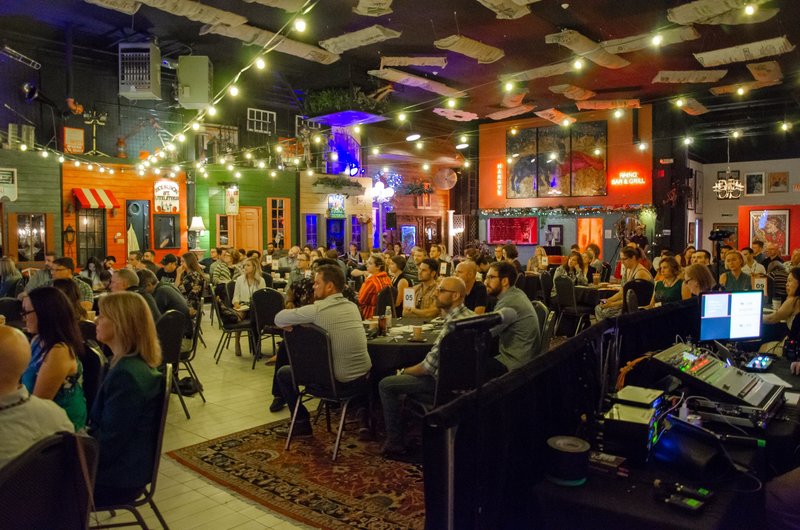Authors: Mike Thone, Interaction Designer; Caitlyn Redden, Interaction Designer; Shannon Baird, Interaction Designer

On August 23-25, ITX held our very first design conference, ITX UX 2018: Beyond the Pixels. The idea began with our design teams’ drive to continuously further our knowledge and skills, and in turn, our desire to see some of the greatest UX speakers in the field discuss the nuance of User-Centered design. While considering the costs, we asked, what if we threw our own conference? What if we brought our staff together, along with our clients and community, to learn more about designing meaningful experiences? As a result, ITX UX was born.

The conference consisted of two days of workshops and a full-day conference at ARTISAN works, a local not for profit art event space. Throughout the conference we discussed:
- Delightful design with Jared Spool, maker of awesomeness at Center Centre and UIE
- How to measure our products more effectively with Kate Rutter, UX Designer and Entrepreneur
- How to incorporate more meaning into our work with Kate O’Neill, Fortune 500 advisor, and author
Jared Spool: Building a Winning UX Strategy Using the Kano Model

“Innovation is not adding new inventions. Innovation is adding new value,” Jared Spool proclaimed as he set the tone for the ITX conference using his witty, logical humor to help us understand that satisfaction is not the same as delight, and that we need to focus on value, not features. In the first keynote of the day, Jared stepped us through the Kano model, and taught us the difference between meeting expectations and delighting customers.
It doesn’t matter if your product has novel features – if you don’t meet basic expectations, your experience will be frustrating. The tools we use to remove frustrations from an experience are not the same as those we use to add delight. To add delight, we focus on pleasure, flow, and meaning. These are excitement generators.
Finding ways to add pleasure to interactions is a start. If we invest further in creating many seamless, intuitive interactions, we improve the flow of our customers’ experience and make it easier for them to complete their goal. The hardest thing to do is create meaning. Meaning is a story which lives in the heads of our users. When we design our products, we should consider what positive stories we want our customers to share about their experience.
Jared took us on a journey from frustration to delight, and punctuated his talk with a recommendation: In order to design for delight, we should sequence our product roadmaps based on customer problems to solve, not product features to build. Great designers fall in love with the problem, not the solution.
Kate Rutter: Finding the Narrative in Numbers: Crafting Product Success Metrics

Kate Rutter posed an important question – How do we know what we do is working?
As designers, we need to work on our number literacy. Maybe UX doesn’t own the numbers, perhaps we think it’s not our job, but tracking the success of a product starts with pinpointing valuable user behavior, and an effective design should consider how we measure that behavior.
At this point, Kate taught each of us in the room how to draw simple “star people” to assist us in visualizing a meaningful behavior. She gave us confidence, saying, “you don’t have to be a poet to write an email, and you don’t have to be an artist to illustrate a behavior.”
By drawing our intended behavior, we were asked to determine a measurement, then to refine it. A valuable metric is clear and specific, normalized, comparable, and actionable. We learned we can design metrics to track positive behaviors the same way we design the product.
Kate O’Neill: Automation, Integration, AI, and the Future of Meaningful Human Experience

Where there is a lack of meaning, there is a void in which absurdity can flow. During Kate O’Neill’s presentation, we learned about Integrated Human Experience Design – her approach to thinking beyond the user interface to create more meaningful experiences.
Machine learning, automation, and algorithms are allowing humans to scale a brand, mission, or platform like never before. Humans encode themselves into their machines – both their values and biases. With more human interactions driven by machines, designers have a responsibility to be thoughtful about what they invent so that what’s automated is still meaningful at scale.
Kate showed us the both/and construct, a way of thinking more comprehensively about the people we design for and the changing ways they experience our products. Our customers are both online and offline, they think global and shop local. They’re employees during the day and customers at night.
Our businesses exist to solve problems people have and to make their lives better. By challenging ourselves to think about the dynamic humans we’re designing for, we will automate and scale meaningful experiences and create more loyal, happy customers.
The insights shared from all three speakers resulted in a day focused on how to make products which contribute to improved human experiences.
- Jared Spool helped us identify basic expectations, and how delighting our users is the real differentiator in the marketplace.
- Kate Rutter taught us that the metrics we use to determine success should be as unique as our organization.
- Kate O’Neill showed us the big picture that experience at scale is culture, and it’s imperative we design meaning into our products.
Panel Discussion: Jared Spool, Kate Rutter, Kate O’Neill, Adam Bates, and Tim Wood

The day was rounded out with a panel discussion with the three speakers, and also included Adam Bates, VP of Product Management at Freshbooks, and Tim Wood, Industrial / Interaction Design Professor at RIT. It was fascinating to observe their brains working together.
When engaged in a conversation about ethics in design, Jared discussed free products where the user isn’t the customer. In this scenario, the advertiser is the customer, and the user’s personal data and behavior is the product.
Kate Rutter wondered if we’re doing enough to help users understand the trade-off of free products. When discussing focus within an organization, Kate O’Neill proposed that a company’s purpose and their quarterly goals should be balanced like a checkbook. Jared had a similar thought, saying organizations need to compare their short-term goals with their five-year vision, and that vision should act as a flag in the sand visible from a great distance.
As the panel came to a close and the conference wrapped up, there was a clear theme throughout the day centered on finding meaning in human problems and being more purposeful in the products we create.
To get more info on ITX UX 2018: Beyond the Pixels and to sign up to receive updates about future conferences, head over to our recap page. And if you want to check out some more pictures from the event head over to our Facebook.



